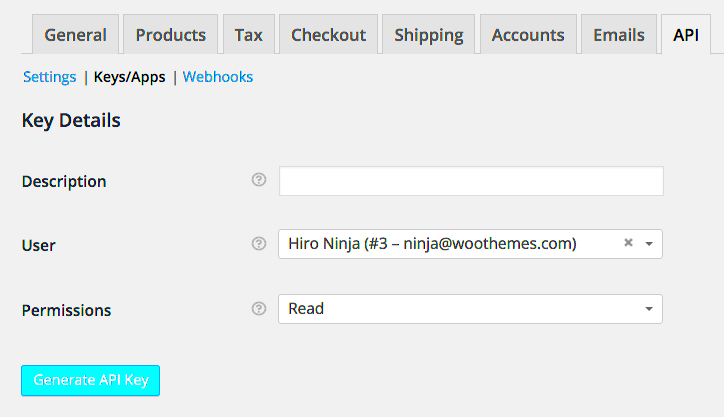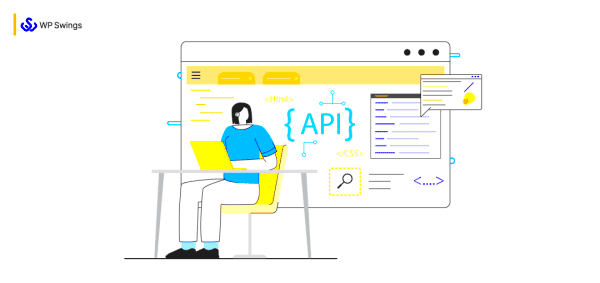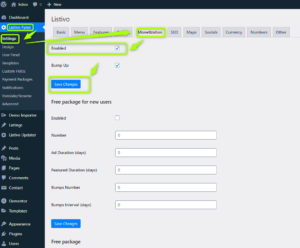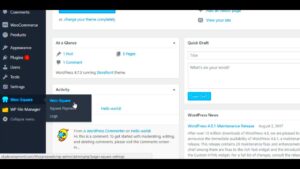Welcome to the world of WooCommerce API REST! If you’re a developer looking to integrate or extend functionality for your WooCommerce store, understanding the
The WooCommerce REST API allows you to interact with your WooCommerce store’s data, such as orders, products, customers, and more. This intuitive interface means you can easily pull in or send out information, whether building custom applications, mobile apps, or creating features on your website. So, let’s dive in and explore what makes the
Understanding REST API Concepts

Before diving deeper into WooCommerce‘s API, let’s get acquainted with some core REST API concepts that will make your experience much smoother.
- Stateless Communication: Each API request from the client to the server must contain all the information the server needs to fulfill that request. This means the server doesn’t store any session information.
- Resources: In REST, every piece of data is considered a resource, accessible through a unique URL (or endpoint). For instance, the list of products might be accessible at
/wp-json/wc/v3/products. - HTTP Methods: REST APIs primarily use standard HTTP methods to perform actions. Here’s a quick rundown:
- GET: Retrieve data.
- POST: Create new data.
- PUT: Update existing data.
- DELETE: Remove data.
- JSON Data Format: APIs typically communicate using JSON (JavaScript Object Notation), which is a lightweight and easy-to-read format. This is the format you’ll encounter when sending or receiving data using the WooCommerce API.
Understanding these concepts will help you navigate the WooCommerce API more effectively, making your development process much smoother and more efficient!
Getting Started with WooCommerce API
If you’re diving into the world of WooCommerce API, you’re in for an exciting journey! The WooCommerce API allows developers to interact with the
1. Set Up WooCommerce: Before you can use the API, ensure you have WooCommerce installed on your WordPress site. If you haven’t yet, install it from the WordPress plugins repository and configure it according to your needs.
2. Enable REST API: WooCommerce comes with the REST API enabled by default. To confirm it’s active, navigate to WooCommerce > Settings > Advanced > REST API in your WordPress dashboard. You’ll be able to see existing API keys or create new ones.
3. Create API Keys: To communicate with the WooCommerce API, you’ll need to create API keys. Click on “Add Key,” fill in the description, choose the user with the appropriate permissions, and select the permission level (Read, Write, or Read/Write). After saving, make sure to note the Consumer Key and Consumer Secret—these will be crucial for authentication.
4. Choosing Your Development Environment: Decide where you want to test your calls to the API. You can either use a local server setup or a live server. Tools like Postman or Insomnia can be very helpful for making HTTP requests to the API endpoints.
5. Understand the Endpoints: Familiarize yourself with the various available endpoints. They are generally categorized into products, orders, customers, and more. The official WooCommerce REST API documentation is an excellent place to start.
Once you have these steps in place, you’ll be ready to start interacting with your WooCommerce store programmatically!
Authentication Methods
| Authentication Method | Description | Technical Requirements |
|---|---|---|
| OAuth 1.0a | This is a standard protocol for authentication that involves using tokens. It is the most secure method and recommended for unreliable networks. | Uses Consumer Key, Consumer Secret, and generated timestamps. |
| Basic Authentication | A simpler method where you send the API credentials in the HTTP headers. It doesn’t require extra libraries but is less secure than OAuth. | Requires the Consumer Key and Consumer Secret in the base64 encoded format in the `Authorization` header. |
| Application Passwords | Introduced in WordPress 5.6, this method allows you to create simple passwords that can be used for API access. It’s a great way to bypass the complexities of OAuth while still maintaining security. | Requires your WordPress username and the application password you generate. |
Which Method Should You Choose?
If you’re looking for security and are developing a complex application, OAuth is your best bet. For simpler use cases or quick testing, Basic Authentication can save time—and Application Passwords are a newer, more user-friendly alternative.
Just remember to never expose your API credentials. Treat them like passwords! By understanding these authentication methods, you’re already making strides to ensure secure interactions with your WooCommerce API. Happy coding!
5. Endpoints Overview
If you’re diving into the world of WooCommerce API, understanding the various endpoints is crucial. Endpoints are basically the URLs that handle specific requests and return responses from your WooCommerce store. They allow you to interact with different parts of your store’s data, enabling easy access to products, orders, customers, and more.
WooCommerce API endpoints can be divided into several categories, each corresponding to a different resource type:
- Products: Access and manipulate your product data. You can create, read, update, and delete products.
- Orders: Handle all order-related data, including searching, viewing details, and updating order statuses.
- Customers: Manage customer information, such as adding new customers or fetching existing ones.
- Coupons: Create and manage discount coupons to encourage sales.
- Reports: Access various sales reports to analyze store performance.
A typical endpoint structure looks like this:
https://yourstore.com/wp-json/wc/v3/productsHere, “/wp-json/wc/v3/” is the base URL, which signifies that you’re connecting to WooCommerce version 3 of the API, and “/products” specifies the resource you want to access.
It’s good to remember that most of these endpoints require authentication via API keys, which you can easily generate in your WooCommerce settings. Understanding these endpoints will greatly enhance your ability to integrate and extend WooCommerce functionalities in your projects.
6. CRUD Operations with WooCommerce API
CRUD operations—Create, Read, Update, and Delete—are the fundamental actions you can perform using the WooCommerce API. By mastering these operations, you can effectively manage your store’s data through API calls. Let’s break down each operation:
Create
Creating resources is a breeze with the WooCommerce API. For instance, if you want to add a new product, you’ll send a POST request to the /products endpoint:
POST https://yourstore.com/wp-json/wc/v3/productsIn the body of your request, you’ll include details like the product name, SKU, price, and stock status.
Read
The Read operation allows you to retrieve existing data. You can perform a GET request to fetch details of products, orders, or customers:
GET https://yourstore.com/wp-json/wc/v3/products/{id}Where “{id}” represents the unique identifier for the product you want to access. This operation is essential for displaying data on your front-end or dashboards.
Update
To modify existing data, you’ll use the Update operation. This typically involves sending a PUT request to an endpoint:
PUT https://yourstore.com/wp-json/wc/v3/products/{id}Here, you would provide the new details in the request body. For example, updating the price or stock quantity of a product.
Delete
If you ever need to remove something, such as a product that’s no longer available, you can use the Delete operation. For this, send a DELETE request:
DELETE https://yourstore.com/wp-json/wc/v3/products/{id}With these CRUD operations at your disposal, you have full control over your WooCommerce store through the API, making it a powerful tool for developers. Happy coding!
7. Handling Webhooks
Webhooks are a powerful feature within WooCommerce that allow you to receive real-time notifications when certain events occur in your store. Instead of relying on periodic checks for updates, you can set up webhooks to push data to your applications as soon as something happens. This means instant notifications for developers, making it easier to synchronize data or trigger actions without delay.
To handle webhooks effectively in WooCommerce, follow these steps:
- Creating a Webhook: Navigate to WooCommerce settings, click on the ‘Advanced’ tab, and select ‘Webhooks’. From there, you can add a new webhook by providing a name, selecting an event, and specifying the delivery URL where the webhook data will be sent.
- Understanding Events: WooCommerce offers a variety of events to hook into, such as order creation, product updates, and stock changes. Familiarize yourself with these to determine which ones are relevant for your application.
- Validating Webhooks: It’s essential to validate webhook payloads to ensure that the requests you’re handling genuinely come from your WooCommerce store. You can do this using the HMAC signature WooCommerce provides.
- Handling Incoming Data: Set up your server endpoint to parse the incoming webhook payload. WooCommerce sends a JSON object containing details about the event, which you can then use to trigger necessary actions in your application.
By effectively implementing webhooks, you can create a seamless experience between your WooCommerce store and other applications, enhancing functionality and allowing for timely updates. It’s not just about automation — it’s about being proactive!
8. Common Use Cases for WooCommerce API
The WooCommerce API opens up a world of possibilities for developers, allowing you to build and enhance stores in numerous ways. Whether you’re looking to create third-party integrations or expand your existing WooCommerce functionalities, the API has got you covered.
Here are some common use cases for the WooCommerce API:
| Use Case | Description |
|---|---|
| Inventory Management | Integrate with third-party inventory management systems to keep stock levels in sync across platforms. |
| Order Management | Automatically update order statuses, send notifications, or fulfill orders using custom applications. |
| Custom Reporting | Generate reports on sales, customer behavior, and product performance by pulling data using the API. |
| Mobile Apps | Power mobile applications that allow users to browse and purchase products directly from their devices. |
| Personalization | Use customer data to tailor product recommendations, enhancing the shopping experience. |
These use cases exemplify how versatile the WooCommerce API can be. Whether you’re looking to streamline operations or enhance customer interaction, leveraging the API can dramatically improve how your WooCommerce store functions. So go ahead, dive into the development process, and unlock the full potential of your online store!
Best Practices for Developers
When working with the WooCommerce REST API, following best practices can streamline your development process and enhance the performance and security of your applications. Here’s a comprehensive guide to help developers make the most of the WooCommerce API:
- Use Proper Authentication: Always use OAuth 1.0a or API keys for authenticating requests. This enhances security and ensures that sensitive data remains protected.
- Limit API Permissions: Set the appropriate permissions for your API keys. Only grant the access levels needed for specific tasks to minimize security risks.
- Utilize Versioning: WooCommerce regularly updates its API, so be sure to specify the version in your requests to avoid compatibility issues. For example, use
/wp-json/wc/v3/for the latest version. - Pace Your Requests: Some API requests can overload your server or lead to throttling by WooCommerce. Make sure to implement rate limiting or caching on frequent requests to increase efficiency.
- Handle Errors Gracefully: Always check for error responses from the API and implement robust error handling in your code. This can prevent unexpected failures in your applications.
- Document Your Code: Maintain clear documentation for your API integrations. This will help not only yourself but also your teammates or future developers understand how to interact with the API effectively.
- Test Rigorously: Use tools like Postman or Insomnia to test your API endpoints before deploying them in production. This ensures your requests return the expected results.
- Follow WooCommerce Guidelines: Keep an eye on WooCommerce’s official documentation and blog for any changes or additional best practices. Staying updated can save you from hiccups in the future.
Troubleshooting and Debugging
Troubleshooting and debugging your WooCommerce API integration can be a bit daunting, but with the right approach, you can identify and resolve issues efficiently. Here are some steps and techniques to help you navigate through common problems:
- Check API Credentials: Ensure that your API keys are valid and have the correct permissions. An invalid key can lead to authorization errors.
- Verify Endpoint URLs: Double-check the URL you are using for API requests. Make sure it’s correctly formatted, including the proper version. For instance, ensure it matches
{your_site}/wp-json/wc/v3/{endpoint}. - Inspect Response Codes: Pay close attention to the HTTP response codes. Codes like 200 mean success, while 400 indicates a client error. Understanding these can quickly lead you to the issue at hand.
- Log Requests and Responses: Implement logging in your application to keep track of the requests sent to the API and the responses received. This can be invaluable for identifying where things go wrong.
- Use Debugging Tools: Utilize browser developer tools or applications like Postman to send requests and inspect responses in real-time. This makes it easier to spot discrepancies.
- Check Server Configuration: If you encounter issues related to server response, check your web server settings. Ensure that your server can handle REST API calls and isn’t blocking them.
- Consult Documentation and Forums: If you’re stuck, never hesitate to refer back to the official WooCommerce documentation or reach out to community forums such as the WooCommerce support channels.
- Incremental Testing: If you make changes to your code, do so one step at a time. This helps pinpoint the exact moment an issue occurs, simplifying the debugging process.
By adhering to best practices and employing effective troubleshooting methods, developers can navigate the complexities of the WooCommerce API with confidence.
11. Resources for Further Learning
For developers looking to dive deeper into the world of WooCommerce and make the most of its robust REST API, there are numerous resources available that can help enhance your understanding and skills. Here’s a list of some of the best places to expand your knowledge:
- Official WooCommerce Documentation: The first place to visit is the WooCommerce REST API Documentation. This comprehensive guide provides essential details on endpoints, data structures, and authentication methods.
- W3Schools: If you’re new to APIs or need a refresher, W3Schools has great tutorials that explain the basics of APIs and AJAX.
- Udemy and Coursera: Online platforms like Udemy and Coursera offer various courses around WooCommerce and API development that can help you learn at your own pace with practical examples.
- WordPress Community: Joining a community can enhance your learning experience. Platforms like WordPress Support Forums or Reddit’s WooCommerce subreddit often have discussions that provide valuable insights.
- YouTube Tutorials: For those who prefer visual learning, YouTube is a treasure trove of tutorials where you can find step-by-step guides on using the WooCommerce API.
By utilizing these resources, you can build a solid foundation and gradually progress to advanced topics in WooCommerce API development.
12. Conclusion
As you wrap up your journey into the WooCommerce API REST, it’s clear that mastering this technology can open up a range of possibilities for eCommerce development. The WooCommerce API enables seamless integration with various applications, enhances store functionality, and allows for customized solutions tailored to specific business needs. Here are a few key takeaways to consolidate your understanding:
- Flexibility: The API offers tremendous flexibility in how you manage and interact with your WooCommerce store. Whether you’re creating new products, managing orders, or developing custom apps, the opportunities are almost endless.
- Integration: The ability to integrate with numerous external services means you can enhance the functionality of your store without reinventing the wheel.
- Documentation is Key: Always refer back to the official documentation when implementing new features. It’s your best friend in ensuring that you’re using the API correctly.
- Community Support: Don’t hesitate to reach out to the community. Many developers and WooCommerce enthusiasts are willing to help, share their insights, and provide guidance on best practices.
In conclusion, whether you’re enhancing your store or developing a complex application, the WooCommerce API offers an abundance of capabilities. Embrace the learning resources available to you, stay curious, and keep experimenting! Happy coding!



